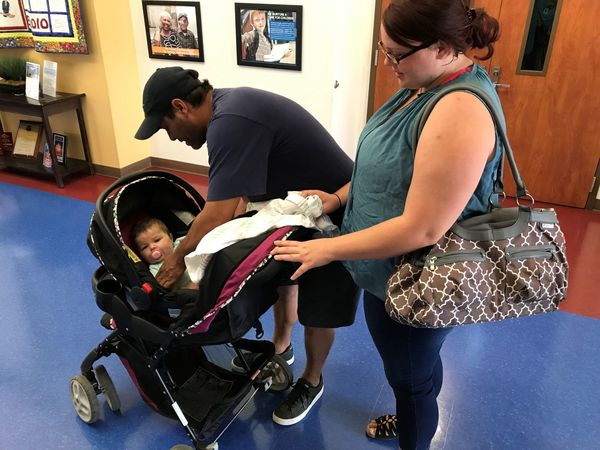Shuttered businesses. Kitchen table turned school desk. Zoom calls. Busy signals from the unemployment office phone line. Going to a food bank for the first time. These indelible aspects of the coronavirus pandemic—which don’t even touch on the loss of health and life that the virus has wrought—will follow us for years to come.
But as millions of American families are fighting for their livelihoods, LEO partners are fighting with them. They’ve innovated new services or retooled existing ones to support families in the age of social distancing and unprecedented need. And they’ve invited us in to study what they are doing, unwilling to let this point in time pass without learning all we can.
Once the pandemic hit, Catholic Charities Chicago turned to LEO to help design and evaluate an intervention to help build evidence around what is most effective when it comes to distributing emergency funds.
In this study, CCC gives a portion of its applicants the normal amount of emergency financial assistance to cover housing-related costs that have arisen as a result of COVID-19’s financial impact. Another portion receives double the typical amount of funding. Recipients will then be followed over time to see how the differing funding amounts impact their ability to stay in their homes and out of debt. What we learn can help service providers target scarce funds to those who stand to benefit the most from the financial boost.

While the CCC study will help us learn the right amount of emergency financial assistance to stabilize a family, a new study with Catholic Charities Galveston Houston will help us understand the most effective delivery method.
Typically, financial assistance payments are made directly to a client’s landlord or utility company. But CCGH questions the assumptions behind that usual way of doing business. They believe instead that giving funds directly to the person in need is crucial for upholding that person’s dignity and autonomy, and that the recipient can be trusted to spend the funds to meet their needs. What CCGH wants to know now is if clients who directly receive emergency financial assistance payments have the same or better outcomes than those who receive assistance indirectly, via payments made by the charity to their landlord or utility company.
To find out, the LEO research team works with CCGH as they distribute these emergency housing funds. A portion of the applicants to the program are paid directly, some are paid via their landlords, and others—not enough funding exists to provide all applicants with financial assistance—do not receive any aid. LEO will then track participants in the study to determine what effect the way emergency rental assistance is delivered has on housing stability, spending, and other metrics of health and income.
While these two Catholic Charities agencies are standing in the gap to resolve crises before they send a family spiraling, Practice Makes Perfect is working to make sure the pandemic doesn’t derail future self-sufficiency where it starts—in childhood education.
Many students—especially those from low-income homes—don’t have the technology needed to participate in online school, and are at risk of falling behind their peers after months of lost access to classroom resources and in-person support from a teacher.
When it became clear that the coronavirus was pushing education to the online sphere, LEO partner Practice Makes Perfect (PMP) adapted its elementary and middle school curriculum—originally designed to counteract learning loss during the summer months—to an eight-week, web-based program to supplement students’ regular online school instruction.
In this study, LEO randomizes eligible students into two groups. The first group has access to the full PMP program’s interactive classes in math and reading and other supplemental materials. The second group also gets these classes and materials, plus something that technological efficiencies can never replace: virtual one-on-one time with teachers and mentors. By comparing the educational outcomes of both of these groups, we can better understand how to ensure no young people are left behind in our nation’s schooling response to COVID-19 and other emergencies.
Now more than ever, low-income families face immense barriers to their economic well-being and their children’s educational success. We need to know what works to engage low-income students in the pandemic era, so they become adults with stable skills and finances to weather future storms. And we need to know how to best stand in the gap for families to stop the cycle of COVID-induced homelessness and poverty before it starts.
Figuring out what is most effective can revolutionize how service providers—some of poverty’s fiercest adversaries—serve their constituents and rewrite the playbook on rising to the occasion in a time of need.